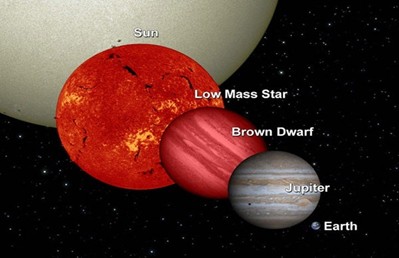PREVIOUS
Mysterious Brown Dwarfs
October 22 , 2024
31 days
144
0
- In 1995, researchers observed a brown dwarf orbiting Gliese 229 – a red dwarf star located about 19 light-years from Earth.
- The brown dwarf names Gliese 229B was too dim for its mass.
- Its mass to be about 70 Jupiter masses, it should have been brighter than what telescopes had observed.
- Scientists suspected Gliese 229 B might be twins.
- The recent research results showed that Gliese 229 B consists of two brown dwarfs (Gliese 229 Ba and Gliese 229 Bb) about 38 and 34 times the mass of Jupiter.
- They orbit each other with a period of 12 days and a separation of 16 times the distance between Earth and the Moon.
- The observed brightness levels also match what is expected for two small brown dwarfs in this mass range.

Leave a Reply
Your Comment is awaiting moderation.


